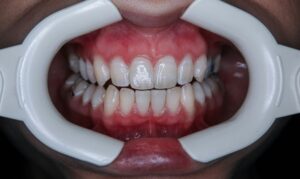Standing desks have gained popularity in recent years as a solution to the negative health effects of prolonged sitting, such as back pain, poor posture, and increased risk of cardiovascular disease. While standing desks offer numerous health benefits, many people wonder if it is safe to use a standing desk all day. The short answer is that standing all day is not ideal, and balance between sitting, standing, and movement is key. In this article, we’ll explore the benefits and potential risks of standing desks and provide guidance on how to use them safely.
1. Benefits of Using a Standing Desk
Reduces the Risks Associated with Prolonged Sitting
Prolonged sitting has been linked to a number of health issues, including obesity, type 2 diabetes, heart disease, and even a shortened lifespan. Standing desks encourage people to stand and move more frequently throughout the day, which can help reduce the negative health impacts associated with sitting for extended periods. By standing instead of sitting, you engage your muscles more, which increases calorie burn and improves circulation. Additionally, standing promotes better posture, especially when your desk and monitor are adjusted to the proper ergonomic height, which can help reduce back and neck pain often caused by poor sitting posture.
Let’s look at some numbers. According to a study published in the “Journal of Physical Activity and Health,” standing burns approximately 50 more calories per hour than sitting. While this might not sound like much, it can add up over time, especially when combined with other healthy habits.
Increases Energy and Productivity
Many users of standing desks report feeling more energetic and focused throughout the day. Standing while working can improve alertness and reduce feelings of lethargy that often accompany long periods of sitting. This increased energy can lead to higher productivity and better concentration, especially during the mid-afternoon slump that many office workers experience.
Consider Jane, a graphic designer who switched to a standing desk. She noticed that her post-lunch drowsiness significantly decreased after she adopted a routine of alternating between sitting and standing. This simple change helped her maintain productivity levels that were otherwise hindered by the traditional desk setup.
May Help Improve Posture
A well-designed standing desk can encourage better posture by aligning your spine, shoulders, and hips more naturally than sitting can. Proper posture while standing involves keeping your shoulders back, chest open, and your weight evenly distributed on both feet. This can help reduce the risk of chronic pain associated with poor posture, particularly in the neck and lower back.
Ergonomics play a crucial role here. An adjustable standing desk that allows you to easily change the height of your work surface can help ensure that your computer screen is at eye level and your keyboard is at a comfortable height, reducing strain on your neck and shoulders.
2. Risks of Standing All Day
Standing for Long Periods Can Cause Fatigue and Discomfort
While standing desks are beneficial for breaking up long periods of sitting, standing for extended periods can also lead to physical discomfort. Prolonged standing can cause muscle fatigue, leg discomfort, and even lower back pain if proper posture isn’t maintained. Over time, standing for hours on end can lead to varicose veins or increased pressure on the joints, particularly in the knees, hips, and feet.
To avoid discomfort, it’s essential to alternate between sitting and standing throughout the day. Ergonomists suggest that the optimal approach is not to stand all day but to incorporate regular movement and shifts in posture.
Increased Pressure on Joints and Feet
Standing for long periods can put pressure on your feet, knees, and hips, especially if your standing posture isn’t optimal or if you’re using improper footwear. Over time, this can contribute to joint pain, particularly in individuals with pre-existing conditions like arthritis. Without an anti-fatigue mat or supportive shoes, standing all day can cause foot pain or exacerbate conditions like plantar fasciitis.
A practical tip here is to ensure you’re using an anti-fatigue mat, which can help distribute weight more evenly and reduce pressure on your feet. These mats are designed to encourage subtle movements that can improve circulation.
Varicose Veins and Circulatory Issues
Prolonged standing without movement can lead to circulatory issues, including the development of varicose veins. When you stand for long periods, blood can pool in your legs due to gravity, leading to discomfort, swelling, and in some cases, the formation of varicose veins. Regular movement and leg stretches can help mitigate this risk.
One effective strategy is to take brief walking breaks every hour. This not only helps with circulation but also gives your mind a refreshing break, boosting productivity when you return to your desk.
3. How to Use a Standing Desk Safely
Alternate Between Sitting and Standing
The key to safely using a standing desk is balance. Alternating between sitting, standing, and moving throughout the day is the most effective way to avoid the health risks associated with both prolonged sitting and prolonged standing. A good rule of thumb is the “sit-stand-move” approach, which recommends:
- Sitting for 20 minutes
- Standing for 8-10 minutes
- Walking or moving for 2-5 minutes
This strategy helps maintain circulation, reduce fatigue, and improve posture. Many people find it helpful to set a timer or use a sit-stand desk that can be easily adjusted to remind themselves to change positions regularly.
Use an Anti-Fatigue Mat
Standing on a hard surface for extended periods can increase discomfort in your feet and legs. An anti-fatigue mat can help by providing cushioning and reducing the pressure on your feet, legs, and lower back. These mats promote subtle movements, which can improve circulation and reduce the discomfort of prolonged standing.
Wear Supportive Footwear
If you plan to stand for extended periods, it’s essential to wear comfortable, supportive shoes. Standing in shoes with little or no arch support, such as flats or heels, can lead to foot, knee, and back pain. Look for shoes designed for standing and walking, or consider adding orthotic insoles to your shoes for added support.
Consider Mark, who initially experienced discomfort when he began using a standing desk. After switching to shoes with better arch support and using an anti-fatigue mat, he found that his discomfort decreased significantly, allowing him to stand longer without issues.
Maintain Good Posture
Good posture is critical when using a standing desk. To avoid strain and discomfort, follow these guidelines:
- Keep your head aligned with your spine: Avoid leaning forward or looking down at your screen for prolonged periods.
- Position your monitor at eye level: Your screen should be at or just below eye level to avoid neck strain.
- Keep your wrists straight and relaxed: Your keyboard and mouse should be positioned so that your wrists stay neutral and your elbows are at a 90-degree angle.
- Distribute your weight evenly: Stand with your feet shoulder-width apart and avoid locking your knees or leaning on one leg for extended periods.
Incorporate Movement Throughout the Day
Regular movement is essential for maintaining circulation and reducing fatigue. Take short walks or perform light stretches every hour to keep your muscles active. Simple stretches for your legs, back, and neck can alleviate tension and prevent discomfort from standing.
4. Additional Tips for Maximizing the Benefits of a Standing Desk
Gradually Increase Standing Time
If you’re new to using a standing desk, it’s wise to gradually increase your standing time. Start by standing for short periods and gradually increase the duration as your body adjusts. This gradual approach can help you avoid the discomfort that often accompanies sudden changes in activity levels.
Personalize Your Workspace
Customize your standing desk setup to suit your needs. This might include adjusting the height of your desk, adding a footrest, or ensuring your monitor is at the correct distance and height. Personalizing your workspace can make standing more comfortable and reduce the risk of strain or injury.
Stay Hydrated
Standing can increase your body’s energy expenditure, which means you might need to increase your water intake. Staying hydrated is crucial for maintaining energy levels and preventing fatigue.
Use Technology to Your Advantage
There are numerous apps and tools available that can remind you to change positions, take breaks, or perform stretches. These can be particularly useful in helping you establish a routine and ensure that you’re not standing or sitting for too long.
Engage in Regular Exercise
While standing desks can help reduce the risks associated with prolonged sitting, they are not a substitute for regular exercise. Incorporating physical activity into your daily routine is essential for overall health and well-being.
5. Addressing Common Concerns and Misconceptions
Is Standing Better Than Sitting?
The question isn’t whether standing is better than sitting, but rather how a balance of both can be achieved. Both prolonged sitting and standing have drawbacks, and the key is to find a balance that works for you.
Do Standing Desks Help with Weight Loss?
While standing desks can contribute to increased calorie burn, they are not a weight loss solution on their own. Combining standing with other healthy habits, such as regular exercise and a balanced diet, is necessary for weight management.
Can Everyone Use a Standing Desk?
Standing desks can be beneficial for many people, but they may not be suitable for everyone. Individuals with certain health conditions, such as chronic pain or mobility issues, should consult with a healthcare professional before making significant changes to their workstation setup.
6. Embracing a Balanced Approach
The journey to incorporating a standing desk into your daily routine is personal and should be approached with flexibility and mindfulness. By embracing a balanced approach that includes sitting, standing, and moving, you can create a workspace that supports your health and productivity.
Remember, the ultimate goal is to create a work environment that keeps you comfortable, healthy, and productive. Listen to your body, make adjustments as needed, and enjoy the benefits of a more dynamic workday. By doing so, you’ll not only improve your physical health but also enhance your overall quality of life.




